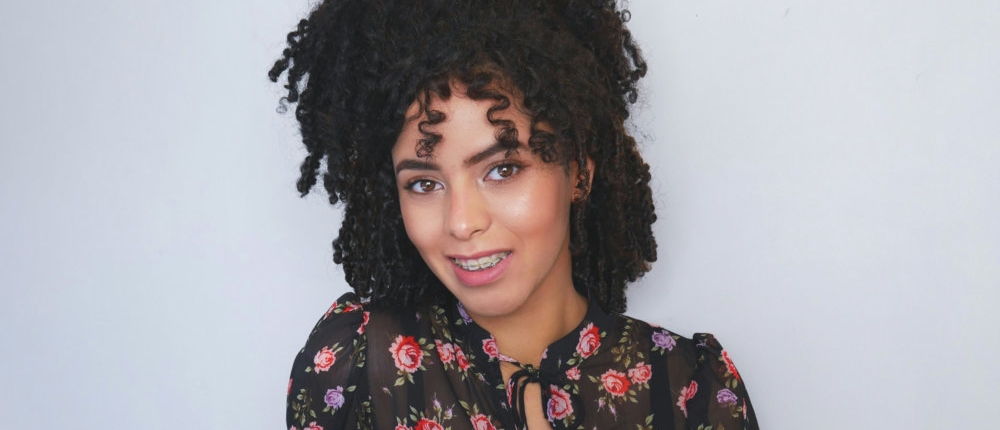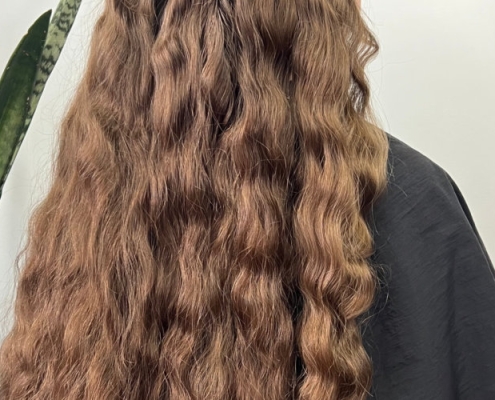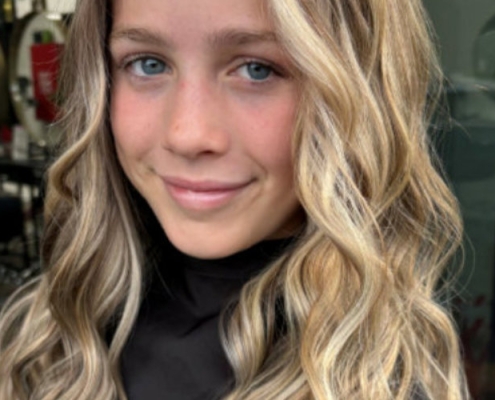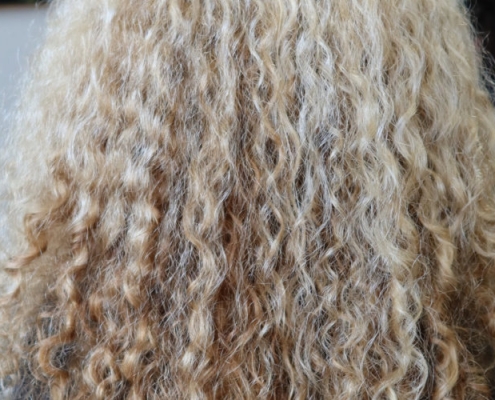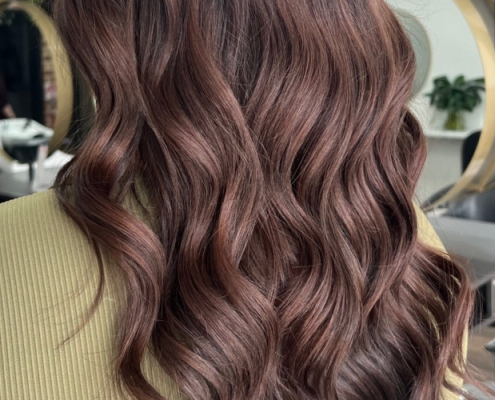Curly Hair Myths: What You Need to Stop Believing
Curly hair has been surrounded by myths for years—many of which lead people to use the wrong products, adopt ineffective hair care routines, or feel pressured to straighten their natural curls. But it’s time to set the record straight!
Whether you have loose waves, bouncy ringlets, or tight coils, this article will debunk the most common curly hair myths and help you embrace your natural texture with confidence.
Myth #1: Curly Hair is Always Frizzy
Many people believe that frizz and curls go hand in hand, but this isn’t true. Frizz is often a sign of dehydration, product buildup, or improper styling techniques, not an unavoidable characteristic of curly hair.
Why This Myth is False
- Frizz is caused by dryness: When curls lack moisture, they absorb humidity from the air, causing the cuticle to expand and create frizz.
- Using the wrong products can cause frizz: Sulfates and alcohol-based products strip natural oils, making hair more prone to frizz.
- Improper drying techniques lead to frizz: Rubbing your hair with a towel disrupts the curl pattern and lifts the hair cuticle.
How to Prevent Frizz:
- Use a sulfate-free shampoo to keep hair hydrated.
- Apply leave-in conditioner and seal with an oil or cream.
- Dry hair with a microfiber towel or cotton T-shirt instead of a rough towel.
- Style with anti-frizz products and avoid brushing curls when dry.
For more expert advice on managing frizz, check out How to Avoid Frizz: Top Products and Techniques.
Myth #2: Curly Hair is Hard to Maintain
While curly hair does require a specialized routine, it doesn’t have to be high maintenance or overwhelming. The key is understanding what your hair needs.
Why This Myth is False
- Curly hair thrives on moisture: A proper hydration routine reduces tangles, breakage, and styling time.
- Protective styles make care easier: Braids, buns, and pineappling reduce daily styling.
- Consistent trims prevent issues: Removing split ends keeps hair manageable and reduces frizz.
Simple Curly Hair Routine:
- Wash with a gentle, sulfate-free cleanser once or twice a week.
- Apply deep conditioner weekly to keep curls hydrated.
- Use a leave-in conditioner and curl cream for definition.
- Air dry or diffuse on low heat for frizz-free curls.
For a full breakdown of the perfect curly hair routine, visit How to Care for Your Curls: The Ultimate Curly Hair Routine.
Myth #3: Brushing Curly Hair Makes It Look Better
One of the most damaging myths is that curly hair should be brushed like straight hair. Brushing disrupts curl formation, leading to frizz, breakage, and undefined curls.
Why This Myth is False
- Brushing separates curls: Instead of defining curls, brushing pulls them apart, creating a frizzy appearance.
- Brushing can cause breakage: Curly hair is more fragile when dry, and brushing stretches strands, leading to breakage.
Best Ways to Detangle Curly Hair:
- Detangle only when hair is wet and coated with conditioner.
- Use a wide-tooth comb or fingers instead of a regular brush.
- Start from the ends and work your way up to prevent breakage.
Myth #4: Curly Hair Should Be Cut When It’s Wet
Unlike straight hair, curly hair shrinks when it dries, which means cutting it wet can lead to unexpected lengths and shapes.
Why Dry Cutting is Better for Curls
- Dry cutting allows for precision: Curls are cut where they naturally fall, preventing uneven layers.
- It accounts for shrinkage: Wet hair appears longer, which can result in a shorter-than-intended cut.
- It enhances curl definition: Dry cutting lets stylists shape curls according to their natural pattern.
Looking for a stylist who understands curly hair? Visit Haircuts and Styling Services for expert curly haircuts.
Myth #5: Curly Hair Can’t Be Coloured Without Damage
Many believe that curly hair should never be coloured because it’s prone to dryness. While curly hair is more delicate, it can be safely coloured with the right techniques and aftercare.
How to Protect Curly Hair When Colouring
- Use ammonia-free colours: Less harsh on curls.
- Deep condition before and after: Keeps curls strong and moisturized.
- Avoid frequent bleaching: Over-processing weakens curls.
For a full guide on how to color curls safely, check out Curly Hair and Hair Colour: How to Colour Without Damage.
Myth #6: Curly Hair Should Be Washed Every Day
Many people believe that washing hair daily keeps it healthy and clean, but for curly hair, frequent washing can actually do more harm than good.
Why This Myth is False
- Curly hair needs natural oils: Unlike straight hair, curls require natural scalp oils to stay hydrated.
- Frequent washing strips moisture: Daily shampooing can leave curls dry, frizzy, and prone to breakage.
- Overwashing can cause scalp issues: Stripping natural oils may lead to an overproduction of oil, causing buildup and irritation.
How Often Should You Wash Curly Hair?
- Wavy hair (Type 2): Every 2-3 days.
- Curly hair (Type 3): 1-2 times per week.
- Coily hair (Type 4): Once a week or as needed.
If you’re unsure about the best washing method for your curls, visit How to Care for Your Curls: The Ultimate Curly Hair Routine for a step-by-step guide.
Myth #7: You Can’t Cut Curly Hair Short
Many believe that curly hair should always be kept long to weigh it down and prevent frizz. While long hair can be a beautiful option, short curly styles can be just as stunning, manageable, and flattering.
Why This Myth is False
- Short curls have volume and definition: The right cut enhances natural bounce.
- Short curly styles are versatile: From curly bobs to pixies, short cuts work for all curl types.
- Layered short cuts prevent bulk: Strategically placed layers help distribute volume evenly.
Best Short Haircuts for Curly Hair:
- Curly Pixie Cut: Adds texture and an edgy yet soft look.
- Layered Bob: Helps define curls and prevent puffiness.
- Curly Shag: A retro-inspired cut that embraces movement.
If you’re thinking about going short, check out The Best Haircuts for Curly Hair: Find Your Perfect Shape to find the best cut for your curl type.
Myth #8: Heat Styling Will Permanently Ruin Your Curls
It’s often said that using heat on curly hair will make your curls disappear forever. While excessive heat can damage your curl pattern, it won’t necessarily ruin your curls permanently—if done correctly and sparingly.
Why This Myth is False
- Heat damage is preventable: Using heat protectants and setting tools at the right temperature minimizes risks.
- Curl patterns can bounce back: With deep conditioning and protein treatments, curls can recover from occasional heat styling.
- Low-heat tools are an option: Diffusers and ceramic irons distribute heat evenly, reducing the chances of permanent curl loss.
How to Protect Curls When Using Heat:
- Apply a heat protectant before using any hot tools.
- Use low to medium heat settings instead of high heat.
- Limit heat styling to once a week or less to maintain curl integrity.
- Incorporate deep conditioning treatments regularly to restore moisture.
If you’re looking for a way to style your curls without using heat, check out Best Hairstyles for Curly Hair: From Casual to Formal for heat-free styling inspiration.
Final Thoughts
There are a lot of misconceptions about curly hair, but by understanding your hair type and using the right techniques, you can keep your curls healthy, defined, and vibrant.
Still falling for common curly hair myths? Explore How to Care for Your Curls: The Ultimate Curly Hair Routine to make sure your hair care habits align with what’s actually best for your curls.
Embrace your natural curls, break free from outdated myths, and enjoy the beauty of your unique texture!

